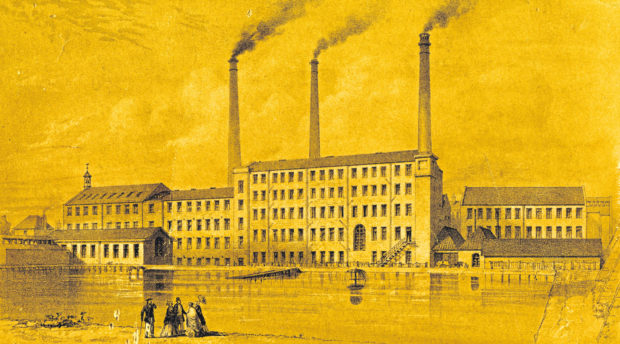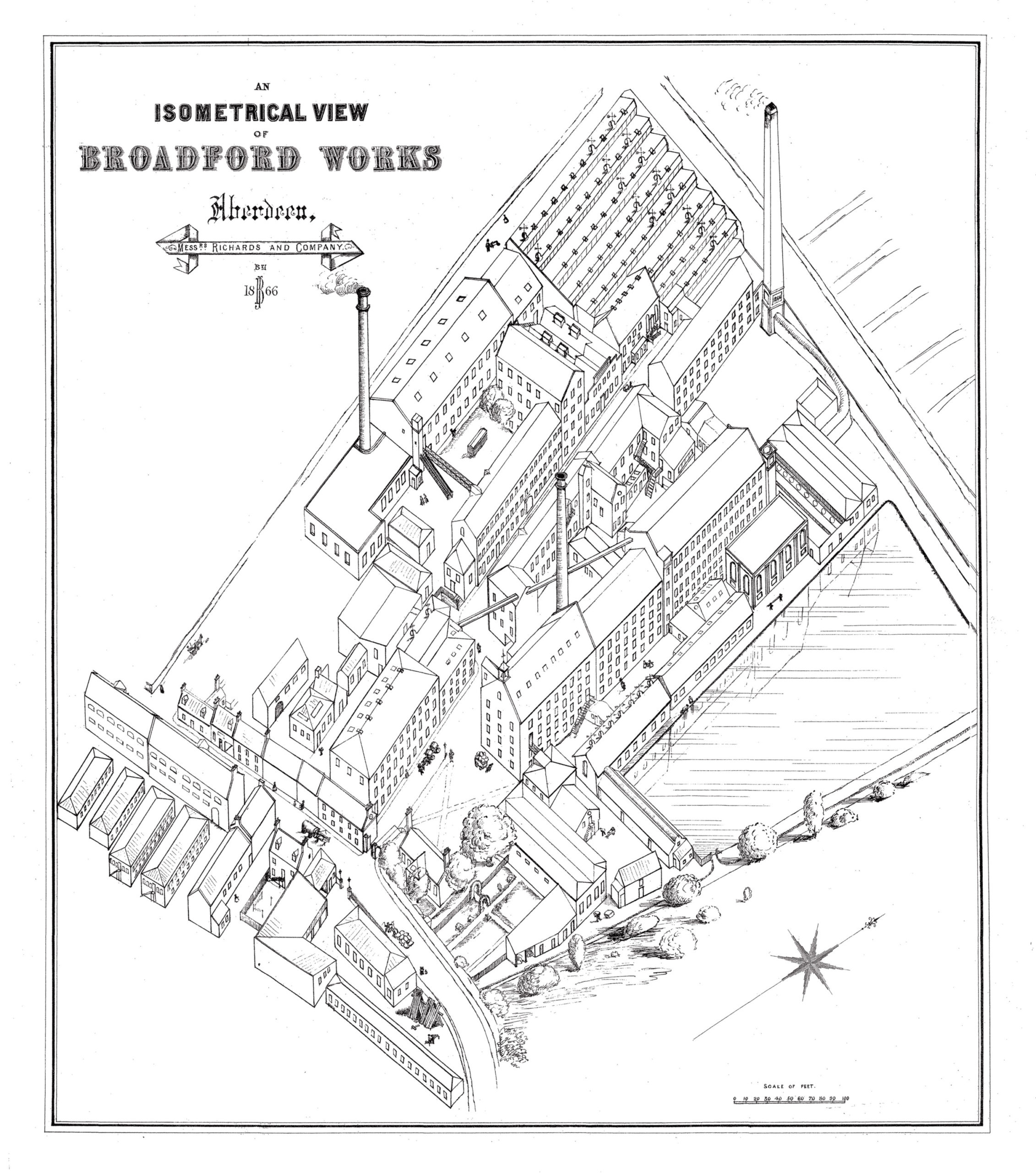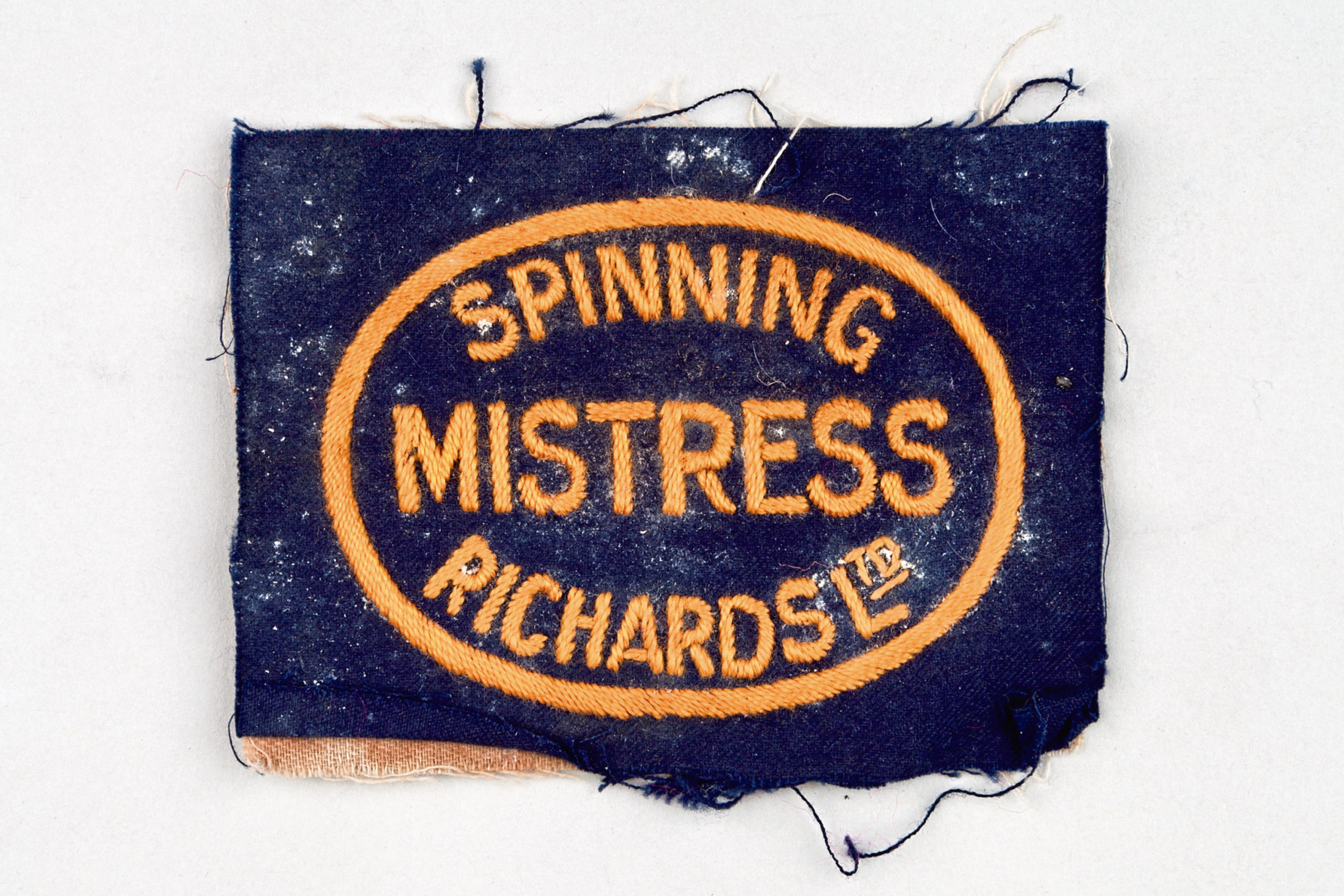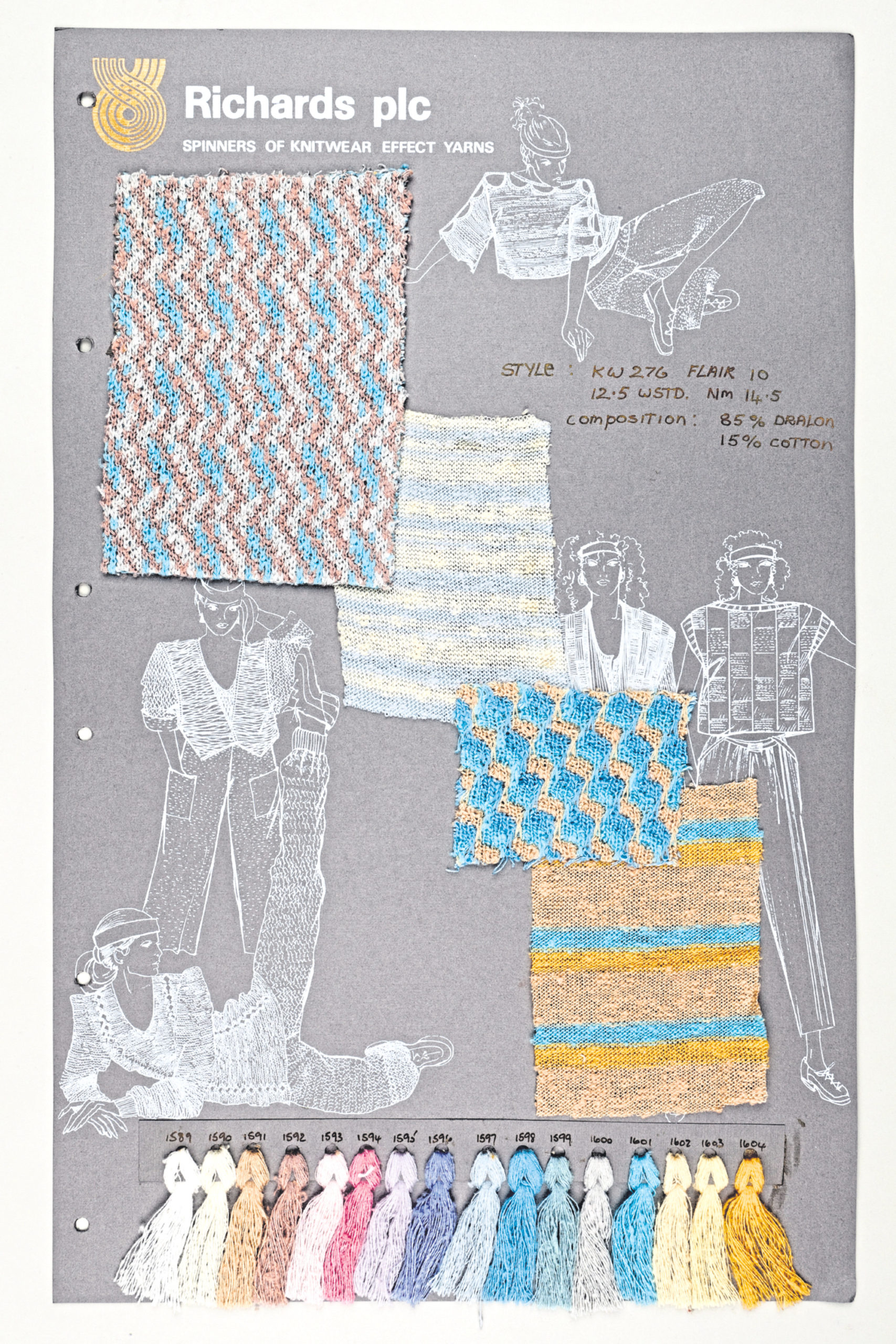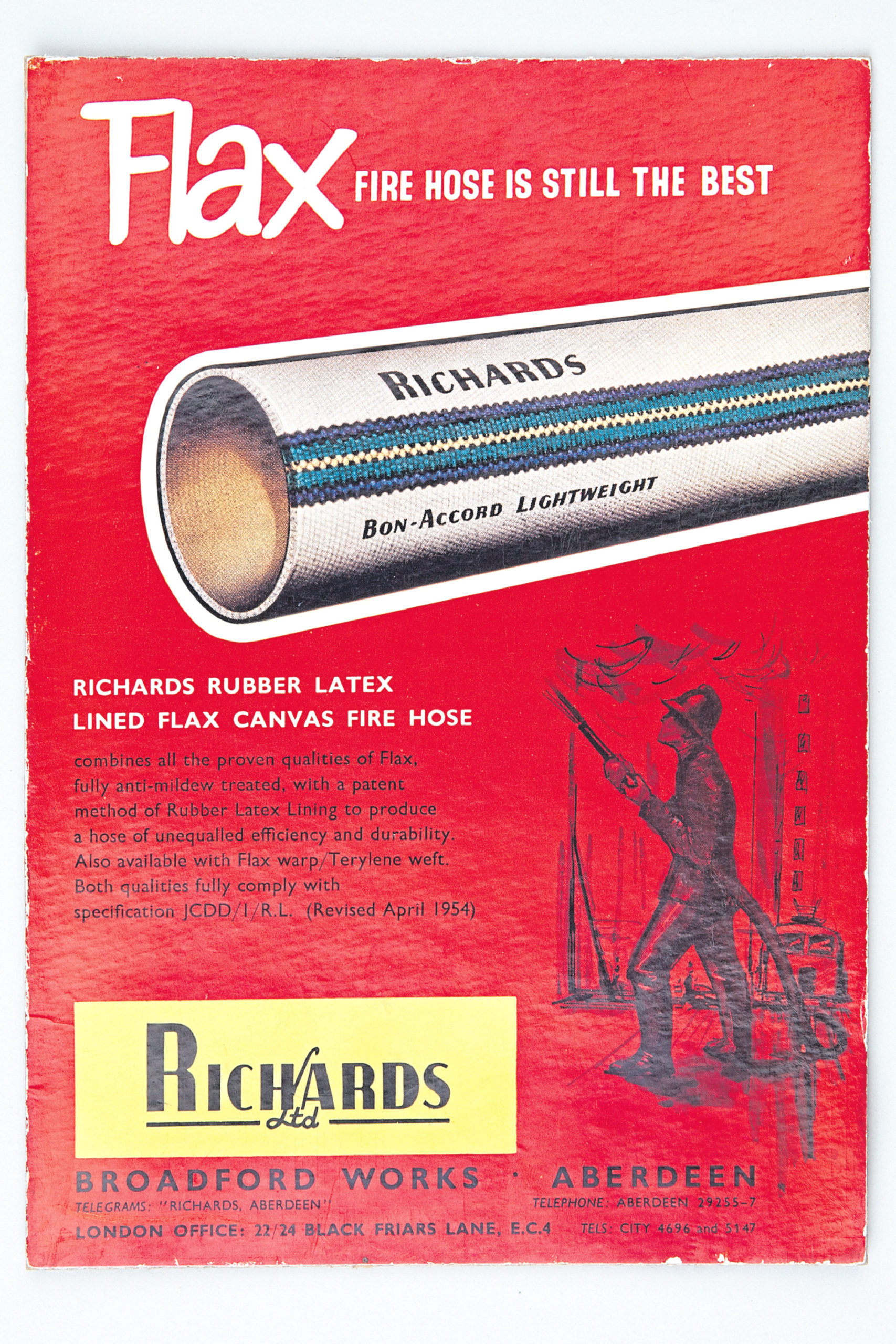Earlier this year, a former production controller for Richards gifted us a large collection of knitwear yarns. It’s been a pleasure to catalogue them, and piece together some of the later history of the once great Broadford Works.
The earliest record we have for the Broadford Works is when the Old Mill, or Grey Mill, was put up for sale in 1811. We know it was bought by the Maberly brothers, who made linen and canvas goods. John Maberly received the Freedom of the City and Maberly Street is named after him. Maberly’s partner, John Baker Richards, became the sole owner in 1831. The rest, as they say, is history. And it’s a turbulent history, with Broadford Works experiencing the same extreme fortunues that characterised textile mills everywhere.
Many know the story of Richards’ fire hoses, and how the hose pipes were lined with latex, tested and dried in the tall towers at Broadford Works. But it’s the later history which is interesting to me. The 1960s was a time for research, development and innovation, particularly in synthetics. Richards introduced synthetic yarns for their fire hoses and a synthetic tarpaulin called Duradon, launched in 1972.
These developments with established products meant the company had gained a lot of spinning expertise with the new yarns and fibres. Around 1963 they decided to expand into new markets. First came carpet tufting yarns, and then yarns for furnishing fabrics, establishing Richards as the leading effect yarn spinner for furnishings in Europe.
Looking around for more markets to exploit, Richards looked to machine knitting yarns. Research and development began in about 1974, with a yarn exhibition in London in 1975. Knitters, knitwear producers and garment manufacturers were invited to give feedback on the Richards yarns to aid development. The first knitwear yarn range in autumn 1978 was well-received. Yarns were sold to big names like Littlewoods, Marks & Spencer and designer labels. Sadly, few records survive.
The collections we care for tell us a lot about what the yarns were made from, the colours and effects used. We’ve also recorded the memories of what is was like to work at Richards, and how these products were made – because otherwise, much of this knowledge and expertise would be lost.
Aberdeen Art Gallery & Museums:
- Aberdeen Art Gallery (reopening autumn 2019)
- Aberdeen Maritime Museum (open 7 days, admission free)
- The Tolbooth Museum (open 7 days, admission free)
- Aberdeen Treasure Hub Museum Centre
For visiting information go to www.aagm.co.uk
Keep up to date with all the latest news from Aberdeen Art Gallery & Museums by signing up to our e-newsletter at www.aagm.co.uk/mailinglist
Follow us on Facebook, Twitter and Instagram @AbdnArtMuseums
